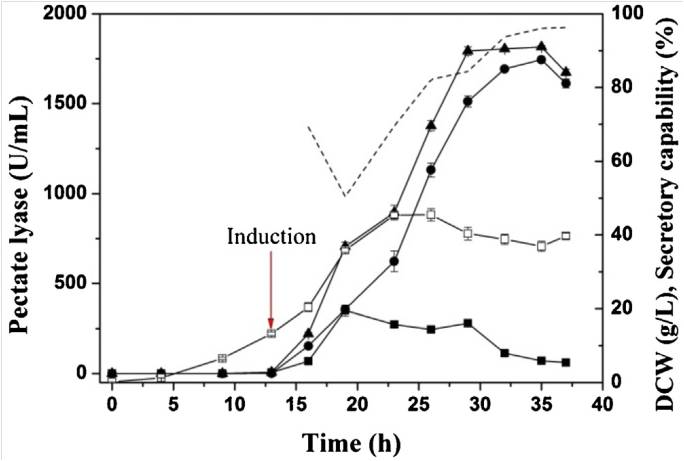Alkaline pectate lyase (or polygalacturonate lyase, PL; EC 4.2.2.2) cleaves the α-1,4-glycosidic bonds of polygalacturonic acid (PGA)or pectin via a β-transelimination mechanism and generates an unsaturated double bond between C4 and C5 of oligogalacturonates. Currently, this enzyme is mainly used in mild and cost-effective bioscouring pretreatment processes in the textile industry, which has the advantage of decreasing environ-mental pollution and energy consumption, when compared with the traditional chemical treatment methods carried out under high pH and temperature conditions. Besides, alkaline PLs have been attracting extensive attention in various industrial processes, such as food processing, plant fiber degumming, waste water treatment, and paper and pulp industries. The primary cell wall of higher plants is naturally recycled in the soil environment, suggesting the existence of a diverse spectrum of pectin-degrading microorganisms. Hence, in our study, DNA fragments encoding alkaline PLs were isolated from alkaline environment soils using degenerate primers designed based on the conservative patterns of PLs from polysaccharide lyase family 1(PL1), and one intact pel gene (pelB) was cloned and expressed in recombinant Escherichia coli. The enzymatic characteristics of the purified recombinant PelB on pectate and pectin substrates were further investigated, and the results showed that PelB had high catalytic activity on PGA and pectin. Furthermore, the high yield titer is an absolute prerequisite for the industrial production and application of enzymes. In our study, a two-stage glycerol feeding strategy was implemented in a 7-L fermentor, and the titer of the recombinant PelB reached 1745.2 U/mL, which represents the highest extracellular yield and productivity of PL reported so far, suggesting the promising potential in industrial application. 
Time profiles for intracellular Pel activity (■), extracellular Pel activity (●),total Pel activity (▲), cell density (DCW, □), and secretion capability (dashed line) in7-L fermentors. |